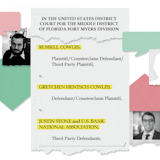One of the state's largest insurers had a Minnesota Senate committee hearing virtually all to itself last week to take aim at a pioneering health proposal — allowing the public to buy into the state-run MinnesotaCare program.
Now it's time for lawmakers to hear from consumers and independent analysts as debate over this high-profile reform ramps up. In particular, experts untethered to the insurance industry deserve equal airtime before the Republican-controlled Senate's key health care committees.
The MinnesotaCare buy-in holds promise as a new option to hold down costs for those struggling to afford individual market coverage, which serves an estimated 162,000 Minnesotans who do not get health insurance through an employer or other government programs such as Medicare. Independent analysis of a buy-in is critical so that policymakers can vet this proposal and fully grasp the opportunities to tailor the reform in a way that would best help Minnesotans.
The critical report presented at the Wednesday Senate hearing was commissioned by Blue Cross and Blue Shield of Minnesota. Its grim predictions about the buy-in — that it would cause price hikes and thousands to drop coverage — can be avoided through smart design and implementation, according to other experts who reviewed the findings.
Gov.-elect Tim Walz, a DFLer, made a MinnesotaCare buy-in one of his signature campaign issues. The reform would work just like it sounds, allowing consumers to voluntarily purchase health insurance from MinnesotaCare even if they don't meet the program's financial eligibility guidelines. MinnesotaCare is for families with incomes at or below 200 percent of the Federal Poverty Guidelines (FPG), but above 138 percent. That translates to annual income of up to $24,280 for individuals and $50,200 for a family of four.
MinnesotaCare was passed in 1992 and helps those who don't qualify for traditional medical assistance but can't comfortably afford private insurance. While buy-in customers wouldn't be subsidized, meaning they'd pay substantially more than current MinnesotaCare enrollees, it's hoped that the program's efficiencies would allow this coverage to compete favorably with plans currently offered by private insurers on the individual market.
Funding for the state's temporary "reinsurance" program, which lowered premiums for those buying on the individual market, expires after 2019, creating urgency for lawmakers to explore less costly options. Legislators passed the reinsurance program in 2017, authorizing up to $542 million for it. The program worked, but it's costly and not a long-term fix.
One reason that a MinnesotaCare buy-in is under consideration is its built-in popularity, with the concept enjoying 70 percent approval in a recent Star Tribune/Minnesota Public Radio poll. Pushback generally comes from insurance companies concerned about the new competition and from Republicans, who fear it would open the floodgates to a total government health care takeover. In Minnesota, that means the GOP's slim majority in the state Senate poses a roadblock even as Walz is sworn in and his party takes control of the Minnesota House.



